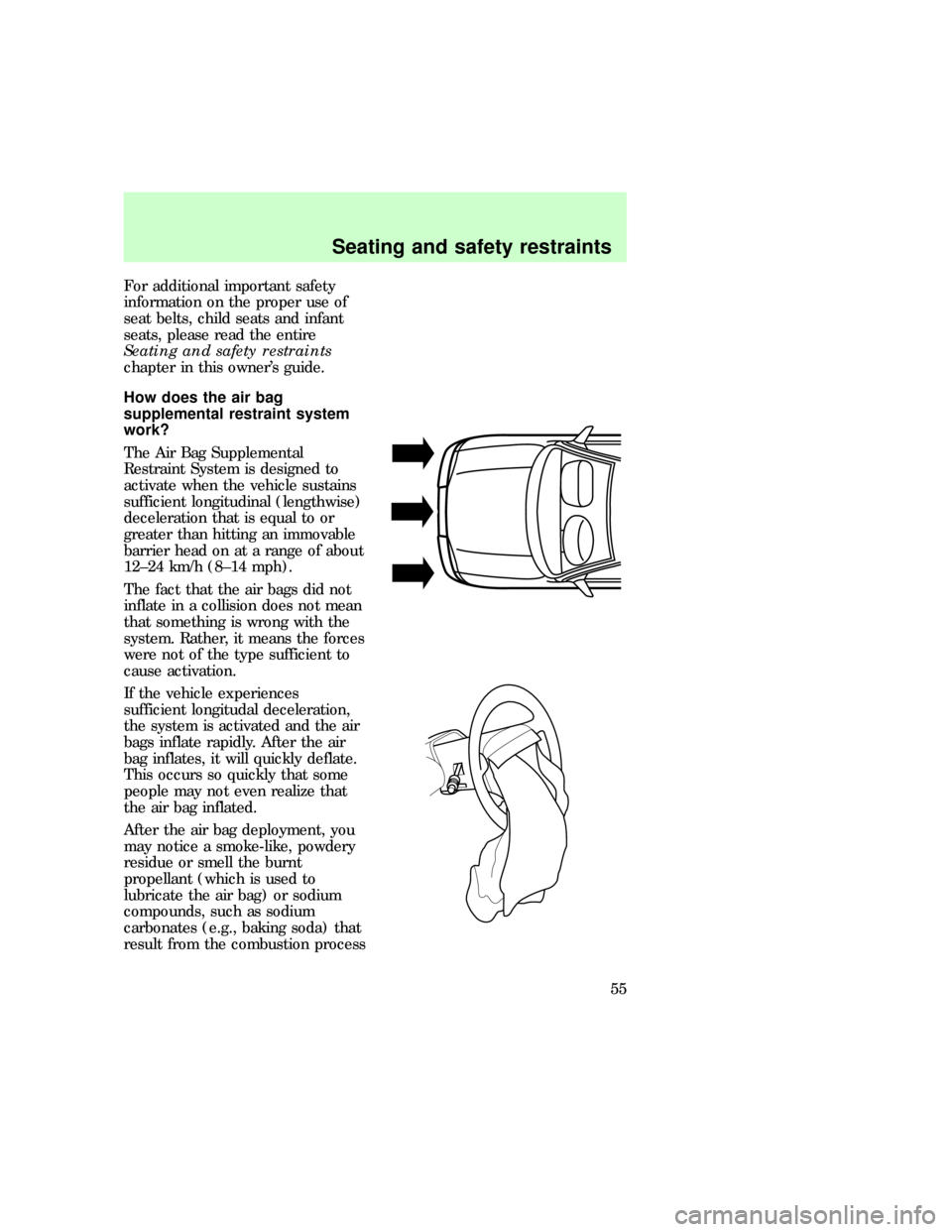Page 55 of 192

For additional important safety
information on the proper use of
seat belts, child seats and infant
seats, please read the entire
Seating and safety restraints
chapter in this owner's guide.
How does the air bag
supplemental restraint system
work?
The Air Bag Supplemental
Restraint System is designed to
activate when the vehicle sustains
sufficient longitudinal (lengthwise)
deceleration that is equal to or
greater than hitting an immovable
barrier head on at a range of about
12±24 km/h (8±14 mph).
The fact that the air bags did not
inflate in a collision does not mean
that something is wrong with the
system. Rather, it means the forces
were not of the type sufficient to
cause activation.
If the vehicle experiences
sufficient longitudal deceleration,
the system is activated and the air
bags inflate rapidly. After the air
bag inflates, it will quickly deflate.
This occurs so quickly that some
people may not even realize that
the air bag inflated.
After the air bag deployment, you
may notice a smoke-like, powdery
residue or smell the burnt
propellant (which is used to
lubricate the air bag) or sodium
compounds, such as sodium
carbonates (e.g., baking soda) that
result from the combustion process
eco_how_work
Seating and safety restraints
55
Page 118 of 192
Front axle jacking points:
²All models
3. Turn the jack handle clockwise
until the wheel is completely off
the ground.
4. Remove the lug nuts with the
lug nut wrench.
5. Replace the flat tire with the
spare tire.
If your vehicle has dual rear
wheels, there are locating pins on
the hubs and wheels with
corresponding holes. When you
install the wheel make sure that
the pins are aligned with the
proper holes.
If your vehicle has single rear
wheels, thread the lug nuts on the
studs with the beveled face toward
the wheel.
If your vehicle has dual rear
wheels, thread the two element
swiveling lug nut on the studs with
the flange facing toward the wheel.
6. Use the lug nut wrench to screw
the lug nut snugly against the
wheel.
Roadside emergencies
118
Page 153 of 192
wheel than the minimum required
by law.
The temperature grade for
this tire is established for a
tire that is properly inflated and
not overloaded. Excessive speed,
underinflation, or excessive
loading, either separately or in
combination, can cause heat
buildup and possible tire failure.
SERVICING YOUR TIRES
Checking the tire pressure
Check the tire pressure
periodically and inflate tires as
necessary. To check the tire
pressure, insert the tire pressure
gauge into the valve system.
eco_tire_service
eco_pressure_checking
Maintenance and care
153
Page 154 of 192
The cold pressure amount is listed
on the Safety Compliance
Certification label.
Improperly inflated tires
can affect vehicle handling
and can fail suddenly, possibly
resulting in loss of vehicle
control.
Rotating the tires
Rotate your tires at regular
intervals for even wear. Rotation
intervals are listed in theService
Guide.
²Four tire rotation
eco_rotating_tiresMaintenance and care
154